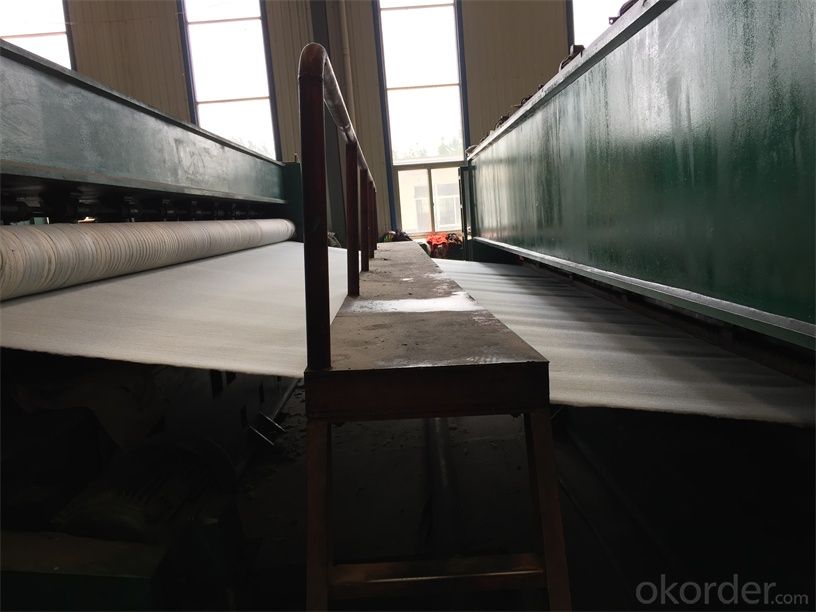- Understanding the Role of Geomembrane Liners in Waste Management
- Innovations in Geomembrane Liners for Water Management
- Geomembrane Liners: A Comprehensive Guide
- The Future of Geomembrane Liners in Civil Engineering
- Geomembrane Liners: Enhancing Landfill Stability
Manager:
WhatsApp:+86 177 0135 2670
Tel:+86 177 0135 2670
Email:marketing@okorder.com
Address:3rd Floor, No.2 Building, No.1 Sanlihe Road
Geomembrane Liners: A Solution for Acid Mine Drainage
Acid mine drainage (AMD) is a significant environmental issue that arises from the mining of coal, metal ores, and other minerals. It occurs when sulfide minerals, such as pyrite, are exposed to water and oxygen, resulting in the formation of sulfuric acid. This acid can leaches heavy metals and other toxic substances into the surrounding water bodies, causing severe pollution and damage to aquatic ecosystems. In this article, we will explore the use of geomembrane liners as an effective solution for managing and mitigating the impacts of AMD.

The Problem with Acid Mine Drainage
Before we delve into the solution, it's important to understand the problem. Acid mine drainage not only affects water quality but also poses a threat to human health and the economy. The contamination of water sources can lead to the closure of fisheries, loss of recreational opportunities, and increased costs for water treatment. Moreover, the heavy metals associated with AMD, such as lead, mercury, and arsenic, can have severe health consequences if they enter the food chain or drinking water supplies.
Enter the Geomembrane Liners
Geomembrane liners are flexible, impermeable sheets made from high-density polyethylene (HDPE), polyvinyl chloride (PVC), or other polymers. They are designed to act as a barrier between the mine waste and the surrounding environment, preventing the infiltration of water into the waste material and the subsequent generation of acid. By doing so, geomembrane liners effectively reduce the amount of AMD produced.
How Do They Work?
The process of installing a geomembrane liner involves several steps. First, the area is prepared by clearing debris and leveling the ground. Then, the liner is carefully unrolled and secured in place, with special attention paid to seams and joints to ensure a watertight seal. Once the liner is in place, a protective layer, such as soil or rock, is added on top to prevent damage from UV radiation and physical abrasion.
Benefits of Using Geomembrane Liners
Using geomembrane liners offers several benefits for managing AMD. They are highly effective at preventing the infiltration of water and the escape of contaminants. They are also durable and resistant to chemicals, making them suitable for long-term use in harsh environments. Additionally, geomembrane liners are relatively easy to install and maintain, which can save time and money in the long run.
Real-World Applications
There are numerous examples of geomembrane liners being used successfully to address AMD issues around the world. In Pennsylvania, USA, a large-scale project was undertaken to cover a 100-acre coal refuse pile with a geomembrane liner, significantly reducing the amount of AMD generated. Similarly, in British Columbia, Canada, geomembrane liners were used to rehabilitate an abandoned mine site, preventing further contamination of a nearby river.
Challenges and Considerations
While geomembrane liners are an effective solution, they are not without their challenges. One of the main concerns is the potential for leaks, which can occur if the liner is damaged or if the seams are not properly sealed. Regular inspections and maintenance are essential to ensure the integrity of the liner. Additionally, the cost of installing a geomembrane liner can be a barrier for some projects, particularly in developing countries where AMD is a significant issue.
The Future of Geomembrane Liners in AMD Management
As the world continues to grapple with the environmental impacts of mining, the use of geomembrane liners is likely to become increasingly important. Advancements in materials and installation techniques will likely make geomembrane liners more efficient and cost-effective in the future. Moreover, as awareness of the environmental and health risks associated with AMD grows, there will be a greater push for the adoption of effective mitigation measures like geomembrane liners.
Conclusion
In conclusion, geomembrane liners offer a practical and effective solution for managing the problem of acid mine drainage. By acting as a barrier between mine waste and the environment, they help to prevent the generation of acid and the release of toxic substances into water bodies. While there are challenges associated with their use, the benefits of geomembrane liners in terms of environmental protection and long-term sustainability make them a valuable tool in the fight against AMD.
- Previous:The Role of Geomembrane Liners in the Management of Hazardous Waste
- Next:The Compatibility of Geomembrane Liners with Various Substrates






